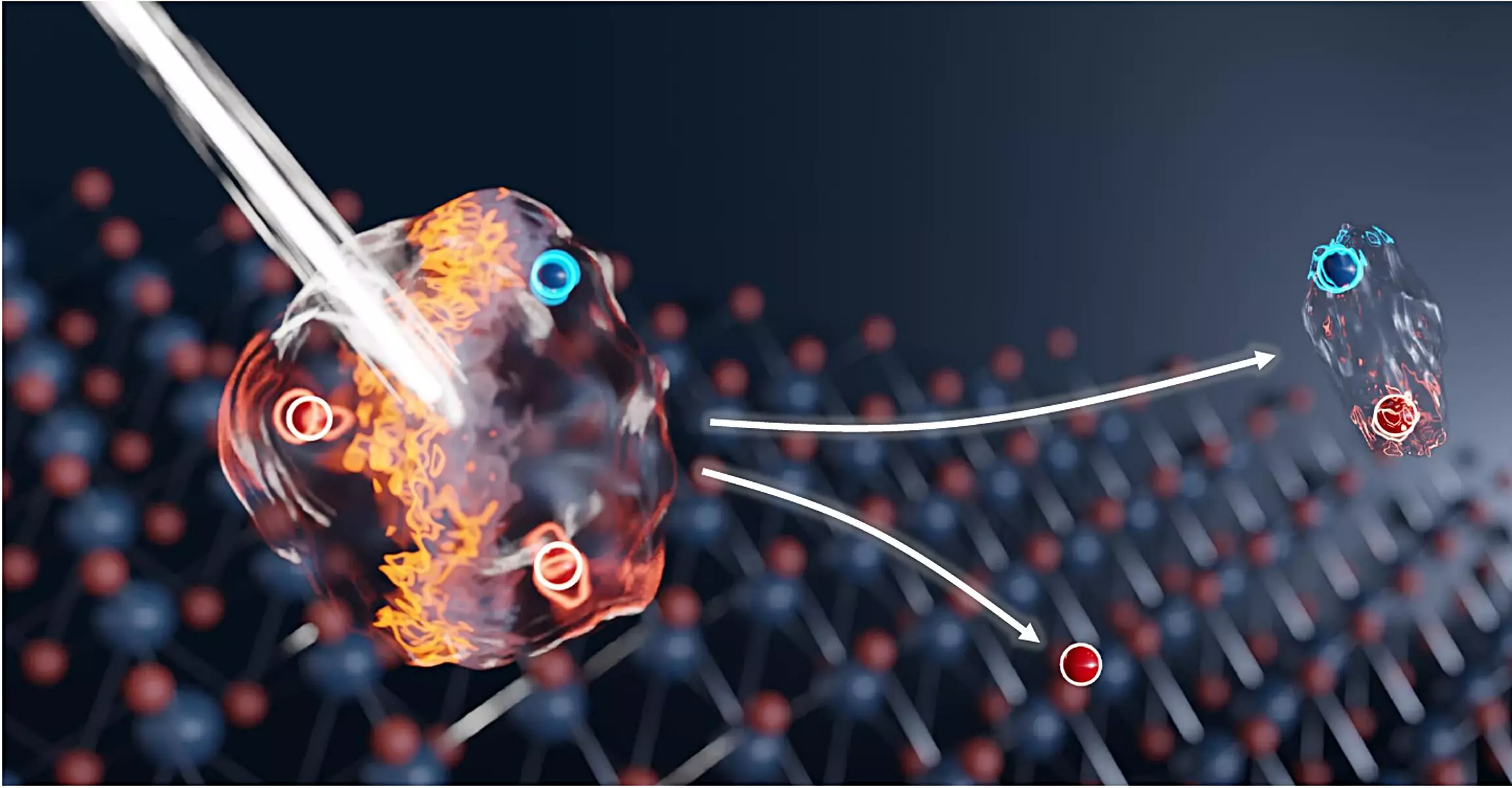The evolution of quantum technologies is greatly influenced by the advancement of materials science, particularly in the exploration of ultra-thin materials. Comprising only a few atomic layers, these two-dimensional substances harbor promise for groundbreaking applications in electronics and associated quantum devices. A recent collaborative experiment led by Technische Universität (TU) Dresden, and conducted at the Helmholtz-Zentrum Dresden-Rossendorf (HZDR), is a significant leap forward in this arena. The research, detailed in the prestigious journal Nature Photonics, illuminates a novel method of rapidly switching between neutral and charged luminescent particles in these materials, unlocking new frontiers for optical data processing and sensor technologies.
The Unique Properties of Two-Dimensional Semiconductors
Two-dimensional semiconductors, unlike conventional bulk materials, exhibit unique electronic properties that stem from their reduced dimensionality. One of the most fascinating aspects of these materials is their ability to generate excitons—bound states of electrons and holes formed when an electron gains energy and moves, leaving behind a positively charged vacancy or “hole.” This fundamental interaction serves as the basis for various electronic phenomena.
When an electron interacts with an exciton in proximity, they can form a more complex trion state, which combines the characteristics of both the electron and the exciton. The dual nature of trions, possessing both electrical charge and strong luminescent properties, allows for synergetic control over electronic and optical signals. The understanding and control of exciton and trion states offer immense potential for their use in future technological applications, notably in high-speed switching mechanisms.
The research team, under the leadership of Professor Alexey Chernikov, made strides in enhancing the speed of switching between excitons and trions. Previous attempts at manipulating these states had yielded limited speeds, but the integration of modern techniques has markedly increased the efficiency of this process. Utilizing a unique facility with the FELBE free-electron laser, researchers were able to emit powerful terahertz pulses that bridge the gap between radio frequencies and near-infrared radiation.
By directing short laser pulses at a minuscule layer of molybdenum diselenide cooled to cryogenic temperatures, the formation of excitons was successfully evoked. Post-formation, these excitons transitioned into trions by capturing available electrons from the surrounding medium. However, the crux of the experiment lay in the subsequent application of terahertz pulses, which facilitated the rapid conversion of trions back into excitons. In what can only be described as a remarkable achievement, this conversion occurred within several picoseconds—nearly a thousand times faster than previously possible with electronic methods alone.
The implications of the findings are expansive. With the capability to accelerate switching processes significantly, researchers can now consider adapting this method to explore more complex electronic states across various material platforms. As the interplay among interactions at atomic scales comes into focus, the potential to discover new quantum states of matter becomes tantalizingly close. Such advances do not merely remain in the theoretical realm; they pave the way for practical applications at room temperature, a crucial milestone for industrial usage.
In sensor technology, this type of rapid switching could yield novel types of modulators, enhancing the information transfer in optical data systems. The prospect of developing compact components that combine electronic control with optically encoded information reflects the emerging trends in miniaturization and efficiency. Furthermore, as researchers explore more about terahertz radiation, scalable detectors—capable of functioning in a broad frequency spectrum—could be developed. These detectors would extend capabilities in imaging and analyzing terahertz radiation, leading to potential breakthroughs in diverse scientific and industrial applications.
The recent study highlights a transformative moment in the landscape of quantum material science. By achieving unprecedented speeds in the switching between excitons and trions, the research not only refines our understanding of these particles but also opens new doors for tangible technological advancements. As investigations continue along this trajectory, the confluence of theoretical physics, materials science, and engineering may produce devices that reshape our interaction with light and electricity in unprecedented ways.
The collaborative endeavors at TU Dresden and HZDR exemplify how interdisciplinary research can propel us towards a future equipped with sophisticated technologies that leverage the unique properties of ultra-thin materials.


Leave a Reply